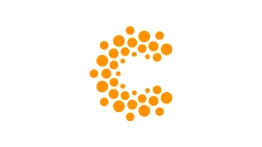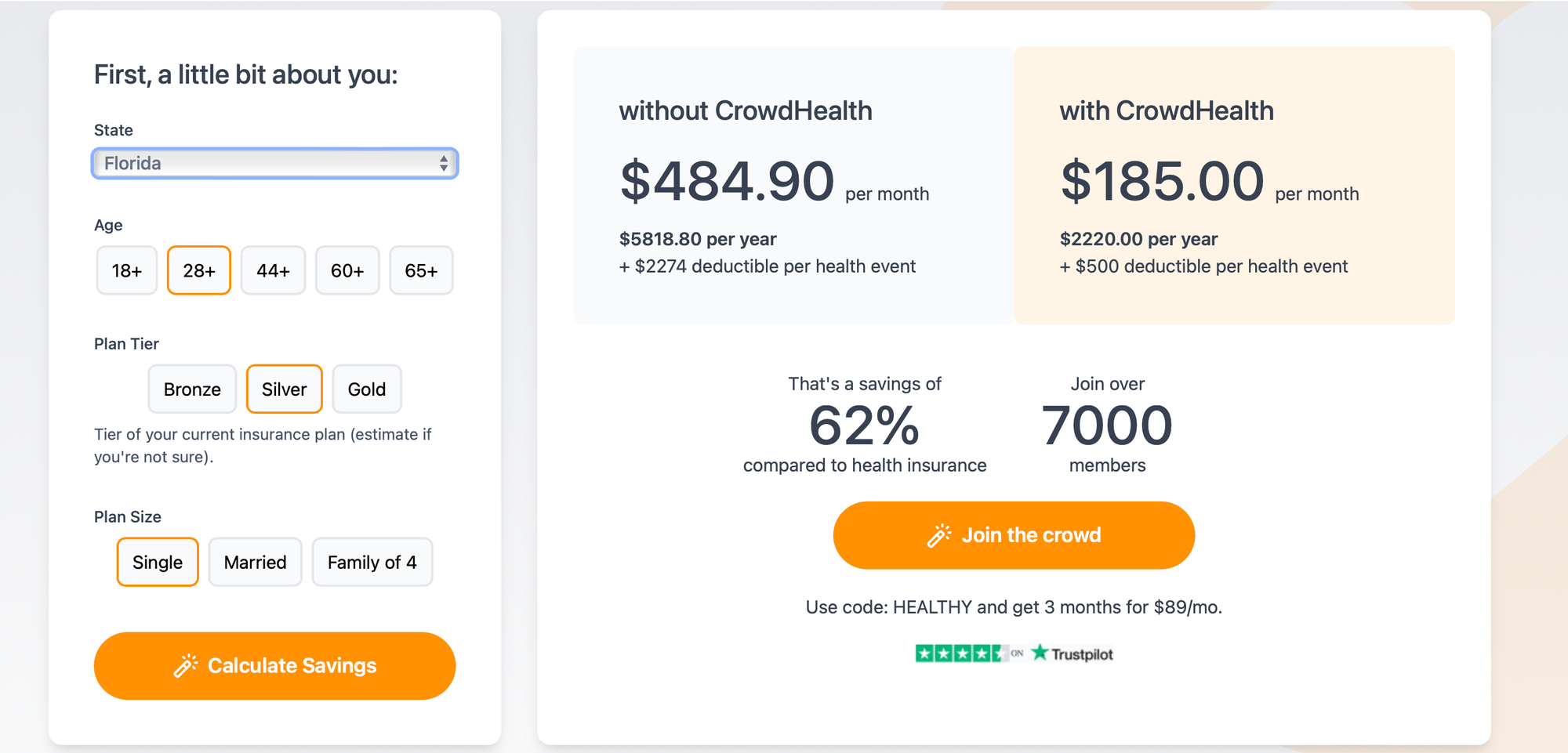

Navigating healthcare without insurance can be daunting, especially with rising medical costs.
With CrowdHealth, you can see a doctor without traditional insurance and still receive quality care. This innovative platform connects members to a community where costs are shared, making healthcare more affordable and accessible.
CrowdHealth offers a unique approach. You pay a monthly membership fee and contribute to health events for other members. When you need medical attention, you pay a portion of the costs and then submit a request for the remaining amount, making significant expenses more straightforward to manage.
Imagine having access to a doctor within minutes through a mobile app and getting a prescription quickly without the hassle of insurance bureaucracy. Learn how CrowdHealth can simplify your healthcare experience and let you focus on getting better without financial stress.
Finding affordable and effective medical care can seem challenging when you don't have health insurance. However, alternative health coverage options like CrowdHealth and similar models can help.
We wonder what would happen if you ripped out the need for all these administrators?! pic.twitter.com/rQFYCTIm68
— CrowdHealth (@JoinCrowdHealth) May 24, 2023
CrowdHealth is a crowdfunding model for healthcare expenses. Instead of traditional insurance, members contribute a monthly amount, which is used to pay medical bills. When a health event costs more than $500, you can request additional funds from the community.
Other similar models exist. They operate on the principle of shared costs. This approach can often result in lower monthly payments compared to traditional insurance. It aims to offer flexibility and support without the high premiums seen in standard health insurance plans.
One benefit of these models is cost savings. Monthly contributions can be lower than traditional premiums. This is appealing to many people who find typical health insurance unaffordable.
Another benefit is flexibility; you often have more choices in your healthcare providers.
Navigating medical care without insurance can be challenging, but there are ways to get the care you need.
First, consider visiting a walk-in clinic or urgent care center. These facilities often provide treatment without requiring an appointment; some offer free or reduced-cost care for those without insurance.
Always ask about a cash discount. Many healthcare providers offer discounts if you pay for the entire service upfront. This can significantly lower the cost of your visit. This is where Crowdhealth can help you. Their care advocates can help you negotiate any bill.
Check out telemedicine services. Online platforms like My Virtual Physician offer appointments for a flat fee, often much lower than traditional office visits. For instance, you can see a doctor for as low as $49.99 without insurance.
Consider seeking care at community health centers. These centers typically operate on a sliding fee scale based on your income, making healthcare more affordable for uninsured patients.
Don't forget to shop around and compare prices. Different providers have different rates, so it can be beneficial to call ahead and inquire about the costs of specific services. Crowdhealth can help you immensely here.
Member paid $400
— CrowdHealth (@JoinCrowdHealth) August 22, 2023
Crowd funded $0 pic.twitter.com/szc9AhC970
Here's a quick overview:
| Step | Details |
|---|---|
| Walk-In Clinics/Urgent Care | No appointment needed; some offer free or reduced-cost care |
| Cash Discounts | Ask for discounts if paying upfront |
| Telemedicine Services | Affordable online visits; e.g., $49.99 with My Virtual Physician |
| Community Health Centers | Sliding fee scale based on income |
| Compare Prices | Call providers to ask about service costs |
Finding ways to see a doctor without health insurance can be challenging. By leveraging community clinics, accessing free health services, and exploring online health communities, you can find viable options for medical care.
Community clinics are a valuable resource for individuals without health insurance. These clinics often provide healthcare services slidingly, meaning the cost is based on your income. This makes it more affordable for those with limited financial means.
At these clinics, you can receive various services such as check-ups, vaccinations, and basic lab tests. Many community clinics also offer dental and mental health services.
Check local health department websites or visit health-focused non-profits to find a clinic near you, or use Crowdhealth, and their Care Advocates will help find a doctor for you.
Aside from affordability, community clinics often have shorter wait times than emergency rooms. These clinics can offer personalized care within your community, making it easier to follow up on treatment plans and see the same healthcare providers regularly.
Many organizations provide free health services for those who can't afford traditional healthcare. These services can include immunizations, STD testing, and screenings for chronic conditions like diabetes or high blood pressure.
Local health departments often organize free health fairs and clinics. These events can be a great opportunity to get essential services without any cost.
Additionally, certain national organizations periodically offer free clinics across different cities.
Pharmacies and retail stores sometimes partner with health organizations to offer free clinics. These can include flu shots and basic health screenings.
Keeping an eye on community bulletin boards, both online and in stores, can help you find these resources.
Online health communitiessome alternatives may can be a helpful way to get medical advice and support from others with similar health concerns. Websites and forums focused on health topics allow you to ask questions and get personalized responses.
Participating in online health communities can provide you with information about managing chronic conditions, lifestyle tips, and emotional support.
These communities often have knowledgeable members, including healthcare professionals, who can offer guidance.
In addition to forums, various websites offer telemedicine services where you can consult with a doctor online. Some of these services offer low-cost options for those without insurance, allowing you to receive medical advice from the comfort of your home.
In emergencies, you need quick access to medical care. While the ER is a common choice, some alternatives may be more affordable and convenient, especially without insurance.
Emergency rooms (ER) are essential for life-threatening conditions like heart attacks or severe injuries. However, for non-life-threatening issues, urgent care centers can be more cost-effective and quicker.
Urgent care centers provide immediate, walk-in treatment for minor illnesses and injuries and are often open evenings and weekends.
You can find out more about using urgent care without insurance here.
Some local clinics also offer sliding scale fees based on your income, making them a viable option.
Additionally, many telehealth services provide consultations and prescriptions for common conditions at a lower cost than traditional in-person visits. These options can save you time and money when you don't have insurance.
Without insurance, it's important to have a plan for handling immediate medical needs.
CrowdHealth offers a unique approach by allowing members to fund their healthcare costs collectively. If you wake up feeling unwell, you can use the CrowdHealth app to talk to a doctor without going to urgent care. This can be a convenient and cost-effective option for managing minor health issues.
Another strategy is to familiarize yourself with the urgent care centers in your area. Know their hours and the types of services they offer.
We are done crowdfunding for the year.
— CrowdHealth (@JoinCrowdHealth) December 28, 2023
3,506 submitted to the community for crowdfunding
3,506 funded by the community
We had some doozies. Brain surgery, cancer cases, motor vehicle accidents, NICU babies, a whole bunch of MSK surgeries, and a host of other large events.… pic.twitter.com/isPNN9ue9O
Consider setting aside a health emergency fund to cover unexpected medical expenses. This proactive approach ensures you are prepared for immediate medical needs without insurance.
CrowdHealth offers an innovative way to see a doctor without traditional health insurance through community funding. Below, you'll find answers to common questions about how this system works and what to expect.
You need to join the platform to see a doctor without insurance using CrowdHealth. Once a member, you can ask the doctor for the cash price for your standard appointment and pay the bill. For medical expenses over $500, their health advocates will help you negotiate the bill.
The monthly costs vary based on age and family size. For those aged 0-54, it can be up to $185 per month. For ages 55-64, it can be up to $270 per month. Families of four or more may pay up to $405 per month. This fee helps distribute costs among members.

User reviews indicate positive experiences with CrowdHealth. For instance, one family of six reports paying only 25% of what traditional health insurance would cost. Another user saved over $5,000 using CrowdHealth compared to their previous insurance plan. These reviews highlight the potential for significant cost savings.
Though detailed information about the complaints process isn't provided, CrowdHealth has a presence on platforms like Trustpilot, where users can share experiences. You can voice concerns and rate their customer service on these public platforms.
There are several alternatives to CrowdHealth for those without insurance. Some options include medical cost-sharing ministries, direct primary care memberships, or paying cash directly for healthcare services. Each alternative has its own structure and benefits, so it's essential to compare them based on your needs.
CrowdHealth may have some limitations. For example, members are expected to cover the first $500 of any health event.
Also, there might be restrictions on the types of services covered or specific providers within the network.







